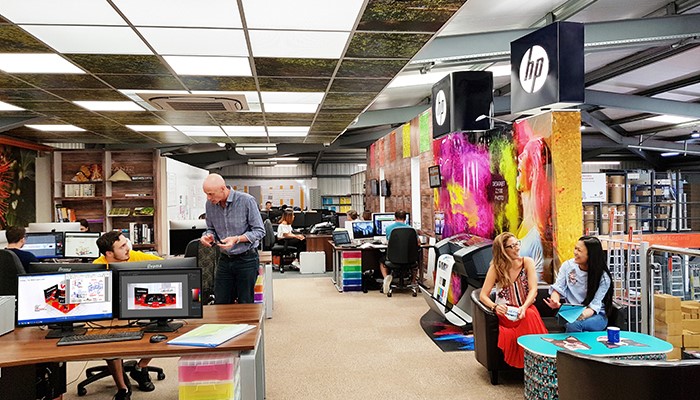Trying to engage your employees, and keep them engaged, was hard before the global pandemic. Now, with a potential recession and job losses looming, months of working from home and a virus still in circulation it is going to be even harder.
Nevertheless, the traditional methods that employers have used for years will still be effective and shouldn’t be ignored in your struggle to reengage your team. Reopening your office will take some getting used to after the lockdown. Trying to keep on top of the three basic pillars of engagement will go a long way towards keeping your employees happy and motivated.
1. Recognition
Employees are more engaged when they feel like their contribution has been recognised. Although remuneration, benefits and rewards are common ways to show your employee that your value their input, you might not be financially stable enough to give these kind of rewards post-covid. So what do you do?
Fortunately, according to this research over 80% of employees value recognition above any rewards or gifts. As long as your employees feel like you appreciate the work they are doing they will be more actively engaged.
The type of recognition that you give your staff also matters. Over two thirds of people believe recognition as an individual is more motivating than recognition as a team. Almost 90% of people find praise from their managers to be very or extremely motivational. And three quarters said the same thing about praise from their peers.
Recognising your employees and praising them for their contributions doesn’t cost you any time or money. Take a look at everything that has been achieved whilst we’ve all had to work from home and get ready to offer individual praise when your doors finally reopen.
2. Growth
Employees are more engaged if they feel like there is the potential to grow and develop their career within your organisation. In fact, the majority of people listed opportunities for growth as a more motivating reason to stay at a company than receiving a pay rise.
This is why employee engagement tends to be better in a growing company, as staff members understand the correlation between business growth and new job opportunities. The problem that most businesses will have is that the post-pandemic recession is likely to halt any growth.
Whether you are open with your employees or not, there will always be tell-tale signs whether your business is growing or taking a hit. If your staff feel like the business is struggling financially, they will likely disengage quickly. Although growth and career progression might not be on the cards right now, job security is becoming increasingly important.
Where possible, you need to make every member of staff feel like their job is safe. If you have made any redundancies then they will likely feel insecure about their position within your organisation. Continue offering praise and recognition for their work so that they feel confident within their role at your company.
3. Fun
Without a doubt, the easiest and most effective way to keep your team motivated and engaged is to provide a fun working environment. Nine out of ten employees list fun working environments to be very or extremely motivating.
This doesn’t mean that you need to turn your office into a trendy London agency or Google HQ overnight. Simply building strong relationships and encouraging their out-of-work hobbies can go a long way. Most people are just looking for a healthy work environment.
Remember, the vast majority of people have enjoyed the time and money that they have saved by working from home. They’ve had more time to develop new hobbies and will likely be looking for a better work/life balance.
One of the things you can do to create a more fun working environment is open new avenues of communication. Make your employees feel comfortable coming to you to discuss ideas like flexible working. In building relationships with immediate supervisors and colleagues, your employees will be happier, more motivated and you will notice increased employee engagement.

Expecting Unengaged Employees
One of the problems business owners are facing is the shift in attitudes that has led to previously engaged employees feeling unmotivated and disengaged. With all of the changes that 2020 has already brought, employees are looking for a sense of normality. Having spent months out of the office only to return to a new socially-distanced environment will take its toll.
Of course, the measures we listed above will help you overcome these difficulties. But the truth is that you have a lot of things to consider at the moment. This is a global pandemic and you’re working hard making the right business decisions. Nobody blames you for letting employee engagement slip. But in doing so, you will cause more damage to your business.
How do you motivate a Disengaged Team?
Under normal circumstance, when an employee reaches this point they are likely to be searching for a new job. In the current situation, disengaged employees may feel trapped or threatened by the decreasing job pool. This can lead to further problems down the line as they will vocalise their issues to the other employees, and their negative attitude could start to rub off. However, it is more cost-effective to reengage a current member of staff rather than recruit new people. So how should you do this?
Career Development
You might not be in the best situation to start promoting your employees and dishing out pay raises and bonuses – but you can still let your staff know that their position within your business is safe. Asking your staff to take part in a training exercise that enables them to develop new skills will make them feel appreciated and give them a sense of job security.
Be Open
Share all the company news, good and bad, with your employees. In doing so, you are telling everyone that they are a valuable member of the team. It will help them to engage with the business, company goals, and align themselves with your mission and values.
Lay out your Expectations
Your business goals will have to be adjusted to help you face the crisis. You may find your product offering, your distribution methods or your marketing strategy have to change. If you are open with your employees they will already understand that their roles may change slightly moving forward.
Make this transition easier by sitting down with each of your employees to discuss their new roles and setting clear expectations, goals and objectives. In doing so, you reiterate the importance of every member of staff and they feel more secure in their job roles with clear targets to work towards.
At my company, Quadrant2Design, we are patiently awaiting a reopen date for our industry. Normally at this time of year we are busy designing exhibition stands, however our day-to-day working pattern has changed. Rather than designing stands, we have been creating free resources to help individuals with their exhibition planning and budgeting. It has been a great exercise for our highly creative team, and something that has seen different groups working together. Overall, we’ve found this to be extremely helpful in re-engaging our employees.
Believe it or not, your employees want to engage at work. Nobody wants to be sat at a desk clock watching for a third of their life. Engaging your team will not only boost your business, but make your office a better place to work.
About the author
Natalka Antoniuk is an exhibition blogger for Quadrant2Design. She uses her industry expertise to teach business owners the benefits of the trade show floor. She has developed a unique insight into the world of exhibiting, having spent time working alongside exhibitors, event organisers and exhibition stand designers.












